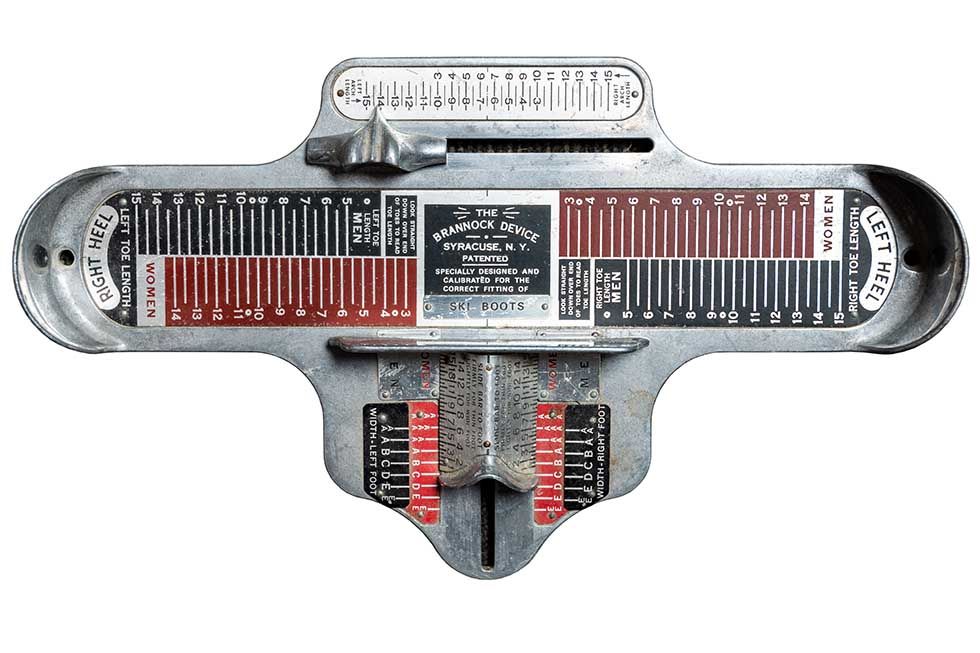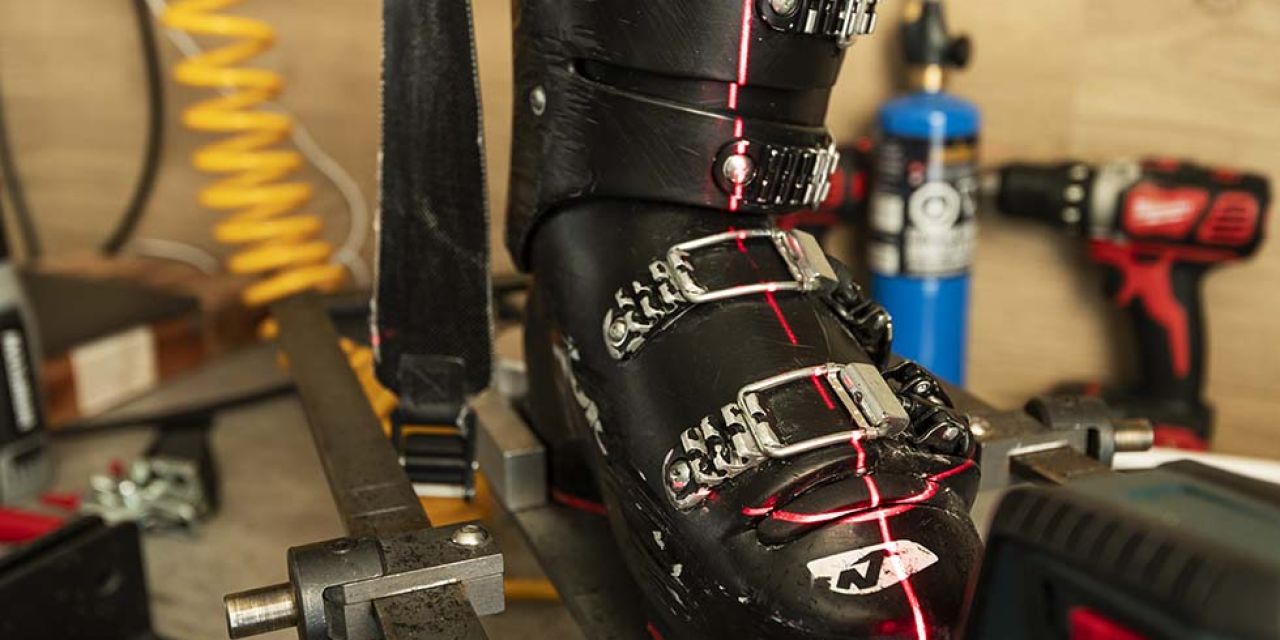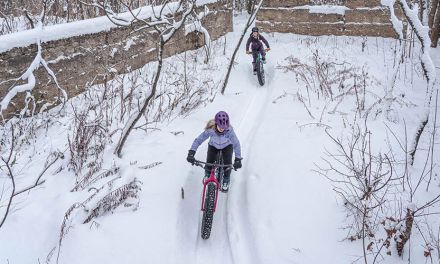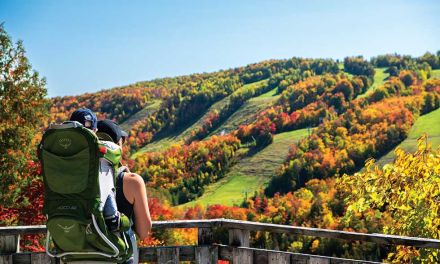Happy Feet
by Kate MacLennan, photography by Clay Dolan
Are your feet not sharing the same passion for skiing as you are? We’ve consulted with experts in ski boots to uncover the secrets to a more enjoyable day on the slopes.
Cathy Mullaly has been downhill skiing for more than 60 years, which she says makes her seem old, though she’s quick to confirm that she isn’t yet. An advanced skier, last season she got 25 days, many thanks to a holiday at Whitewater in B.C. with her youngest son—a trip that became the last hurrah her most favourite ski boots ever. “They were kind of breaking down after 12 or 13 seasons, and I had put quite a bit of duct tape on the hinge point so they wouldn’t rip my ski pants at the bottom. After just two fittings they had been perfect for so many years, always so comfortable and so warm,” she recalls fondly.
Comfort and warmth—the two most coveted sensations when it comes to ski boots, and also the most elusive. Boots that are too tight, too loose, too hard to get on, impossible to get off, that pinch, rub, cut off circulation, cause bunions and bone spurs (we could go on) have been blamed for the start of the end of many skiing love affairs. But when we consulted skiers, fitters, and industry experts, they all said: don’t be so quick to blame the boots.
Here’s their insider advice for getting your perfect pair whether you’re trying to get into, stay in, or rediscover your love for skiing.
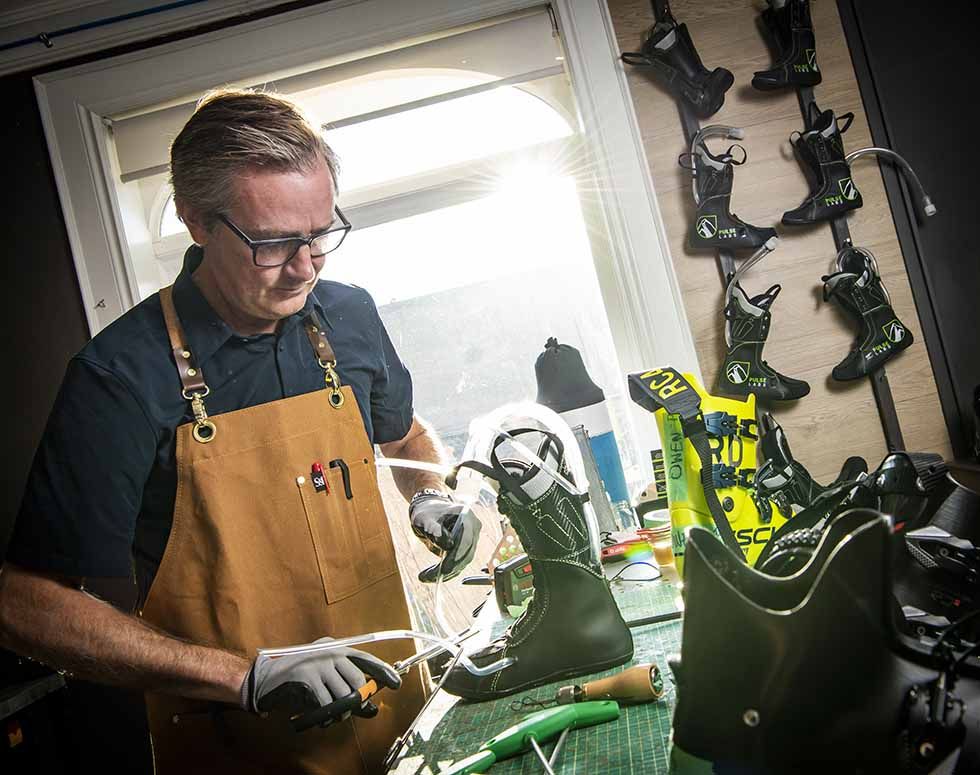
Get Started on the Right Foot
Technology in ski boots has come a long way, but there’s still not truly a one-size-fits-all solution out there, regardless of your ability.
Dak Williams, Ontario territory manager for Tecnica and Nordica, advises that buying boots from a shop that has little or no boot fitting experience is an error you don’t want to make right out of the gate. “I also feel strongly that everyone buying a ski boot should buy some sort of footbed to support their foot properly. There are simple and very effective cut-and-fit options, and custom options. This will help to ensure you get the best ski experience from your boot no matter what age or level of skier you are,” he says, then adds, “of course, this will be a non-issue if you don’t make the first mistake I listed, as any reputable will shop will suggest that you get a footbed.”
Sean Lasseter, a hardgoods manager at Corbetts Ski and Snowboards says, “A mistake a lot of people make is they react to the out-of-the-box initial fit. They don’t understand the ability to dramatically alter and improve the fit in the store even before you go skiing, how much it will change after a day or two of skiing, and how much we can adjust or modify the boot for even further improvement once we get more feedback from them on the snow.”
The most common buyer error? “They buy boots that are too big!” says Leslie Baker-Brown, a three-time All American and 1982 US Giant Slalom National Champion, and the Global Women 2 Women Program Leader for Tecnica Group USA, a program focused on building better ski products for women.
“It’s incredibly easy to buy and to sell a boot that’s too big,” echoes Kai Palkeinen, of Stance Performance Fitting, a new venture, opening its doors this winter in Collingwood. “Not only in size as it relates to length, but also size as it relates to volume. This is not just reserved for your recreational skier, we see it all the time, even at a high-end or professional level.”
You Meet One Foot, You Definitely Haven’t Met Them All
While all feet are anatomically similar, everybody’s are totally unique. Getting your most comfortable ski boot comes down to looking for unique solutions to common problems.
It’s critical to get the support just right for you, explains Thor Verdonk, Technical Product Director at Rossignol Group. “Our feet are our connection to our brain as to where we are in space. The boot gives information back to our brain—am I moving fast, off balance, is the snow hard or soft—and we want that communication to be clear. So, while feet are structurally the same, everyone has their own anomalies and going up a size to address those isn’t the best solution to take care of it.”
“My analogy is a foot is like a three-legged table looking for a fourth leg,” says Cam Powell, a passionate winter sport enthusiast and professional boot fitter at Squire John’s in the Blue Mountains. “When you stand, the mobility of the foot changes, and that where most of your troubles start and the foot complains. When you transfer your weight to roll your skis your foot typically will get longer in length and wider in width, so we’re always trying to support that from underneath to provide more dexterity and mobility, and getting that balance is different for everyone.”
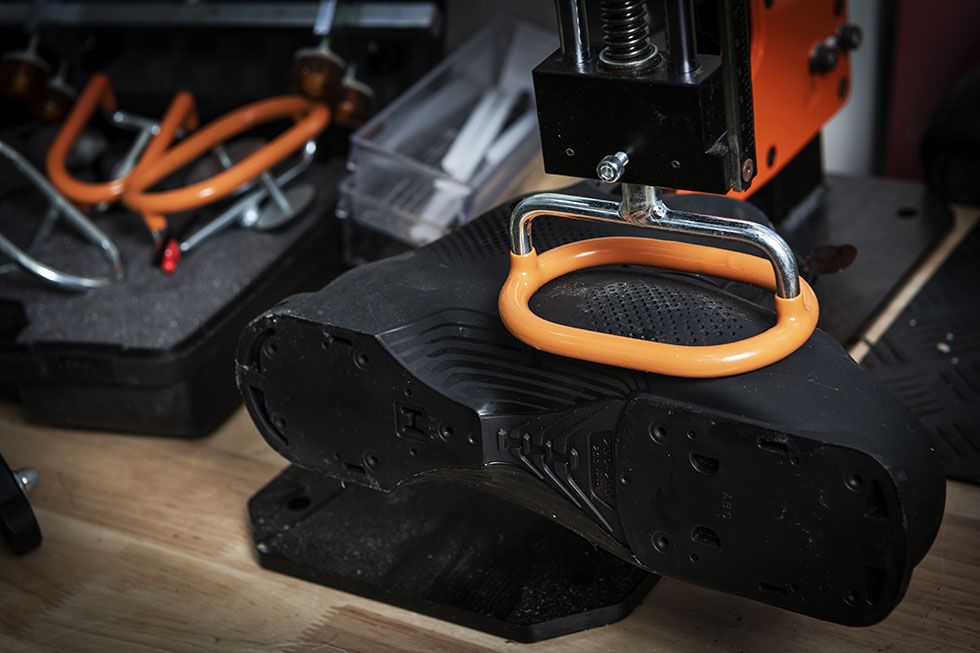
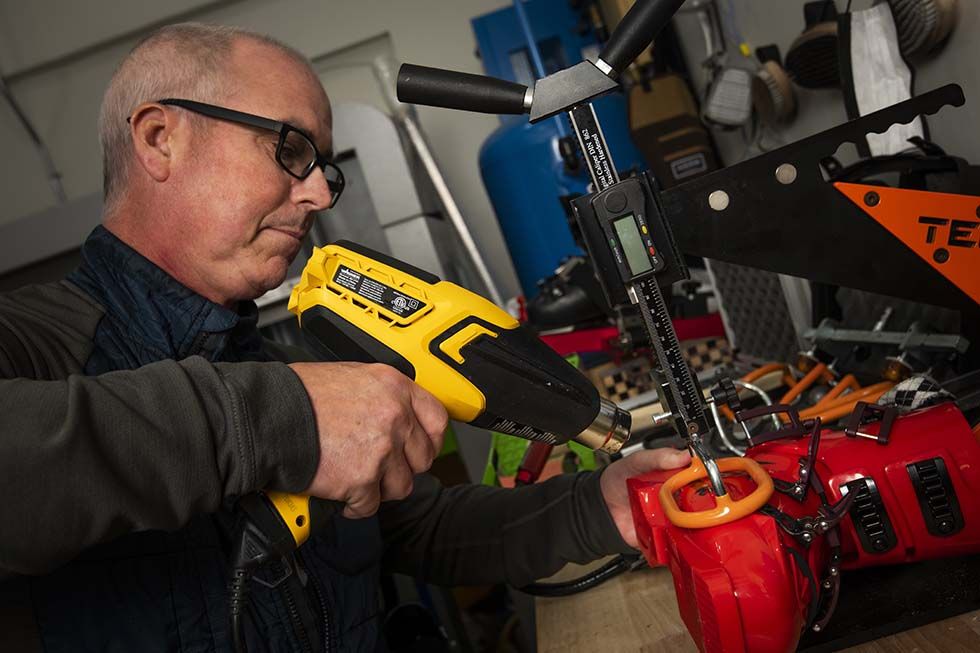
Getting Your Greatest Ski Boots Ever Will Be A Process, Not an Event
“Your boots are the most important piece of equipment in your toolkit,” says John Brown, an expert skier and former instructor who’s been skiing for 36 years. “The foot is the first and last thing to move in a ski turn, so it best react when you need it to. A good-fitting boot versus a great-fitting boot is the difference maker on your ski trip.”
Williams agrees, “They’re the most important piece of equipment that you own.”
This in mind, embrace the idea of investing time in perfecting your new boots. Verdonk says, “People will buy boots that are ultra-comfy in the shop, but things are going to settle. Like your favourite sneakers, it takes time to break a boot in.”
Time spent in the shop is as critical as time on the mountain. “Consider calling ahead to make an appointment. A good fitter will do a full assessment of your foot and lower leg to determine size, volume, and any anomalies your foot has that may need some custom fitting,” says Baker-Brown.
Lasseter says he doesn’t even like to ask a customer how the boot is fitting the first time they put it on—he just tries to tell them it’s going to change. “The reaction is like ‘this is tight’ or ‘I don’t like this’ and it’s up to us to make them understand that it only gets better, that this is the tightest it’s ever going to be. Then A, B, C and D are going to happen that day and in the coming weeks to make it feel different than it does on the first try-on.”
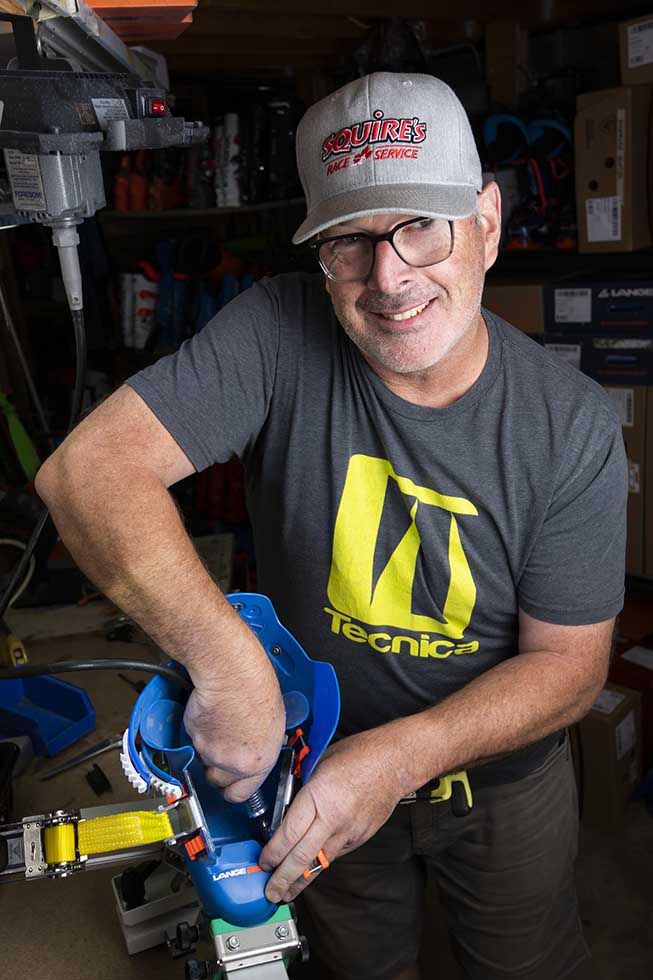
Your Boot Fitter Is Your New Best Friend
“We know statistically that 90 percent of skiers could get a higher degree of comfort, or a higher degree of performance through better fitting boots than they are currently in,” says Palkeinen.
Ski boot fitting is an art form, and a good fitter is essentially creating a sculptural dedication to your feet. Yet, it’s also a science, and good fitters study feet and boots extensively to do it well. Guys like Powell are consulted by the biggest ski boot companies in the world as they endeavour to perfect their products.
“You’re not buying a slipper, you’re buying a technical shoe to help you perform on show,” says Verdonk. “Balancing performance and comfort for your ability is the key, and as the consumer it’s in your best interest to be part of the conversation with the fitter and articulate what you’re feeling.”
Lasseter says the most important elements to consider from a fitter’s perspective are foot and leg shape. “The first thing we do is a thorough foot analysis—height of instep, volume of foot and heel. After that it’s about the skier’s general size and weight, their frequency of skiing and their ability all play a factor, tied into the foot shape conversation.
We try to match the shape of the foot and lower leg with the different shapes offered by the different suppliers, then we have the ability to put the entire boot—the shell and the liner—into the oven as a great way to improve the fit in the store even before you go skiing.”
Powell says that 2D and 3D foot scanners have made a huge difference in a fitter’s ability to get information about feet—like length, step, instep, and height—quickly and accurately, but there’s certain questions that should be always asked up front. “You have to fit what you see and have in front of you, and that’s the customer taking their sock off, bending and flexing to see their range of motion. It’s asking if their feet get cold, if they’ve had injuries, how their circulation is, where’s the best place they’ve skied. Would they ski in the rain? On a cloudy day? You have to give the person in front of you honour because you’re probably spending an hour and a half with them.”
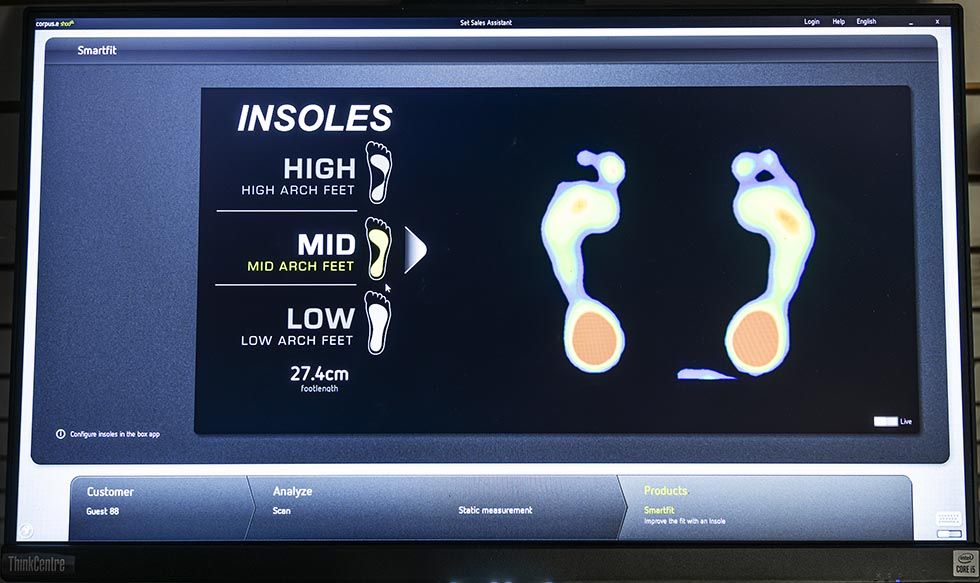
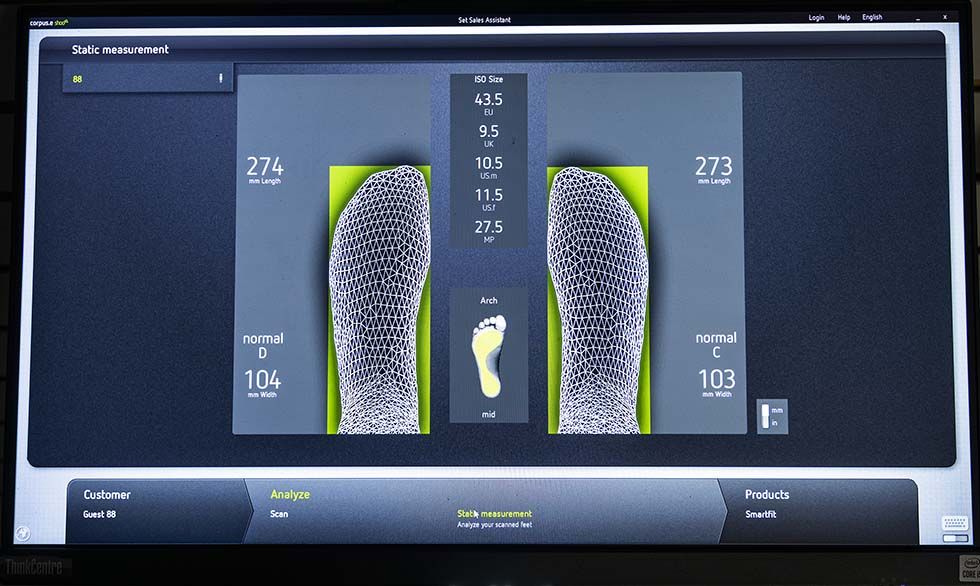
Anatomy of a Ski Boot
(How to Communicate with Your Fitter)
Bootboard: (also called by its Italian name, a zeppa): the removeable floor of the boot shell that the liner sits atop, and that positions the liner in a sort of ramp angle.
Buckles: pretty self-explanatory, but the pros think of them as having three parts: the lever, the bail, and the catch (or ladder).
Cuff: the upper portion of the exterior ski boot, attached at hinge points to either side of the ankle. Cuff size varies significantly between men and women, who tend to have narrower calves. A tip from Baker-Brown: “If you are a female with a larger calf that sits lower on your leg, make sure the boot has a cuff adjustment that can be fitted to your lower leg.”
Flex: the level of resistance the boot provides at the cuff when you bend at your ankle. The flex index generally varies between 60 and 140—the lower the number the more the flex. Lasseter says, “Our men’s offerings typically start as low as a 90 for super recreational stuff and go up to 130. If we had a brand-new skier who’s a big dude at a fit 220 pounds, we’d probably put him into a stiffer boot simply because he’s a recreational skier who’s strong. Women’s we go 70 or 80 to 110, because women typically weigh less. Racing is a whole unique world at 140 and 150.”
Footbed (sometimes called the insole): a layer of material under your foot that provides additional comfort and support, helping distribute pressure evenly over the entire foot to enhance your comfort, and quicken your response.
GripWalk: a proprietary technology for softer, ribbed foot surfaces on the bottom of a ski boot, in addition to a raised front plate that more closely resembles wearing street shoes for easier walking.
Last: the shape of the inside of the ski boot, which is measured by widths. A 100mL last is considered average.
Liner: the piece of foam between your skin and the plastic shell of your boot. Boots come with stock liners, but many people choose custom liners for enhanced performance and fit.
Shell: the plastic exterior part of the boot, usually made of two components, the cuff and the lower.
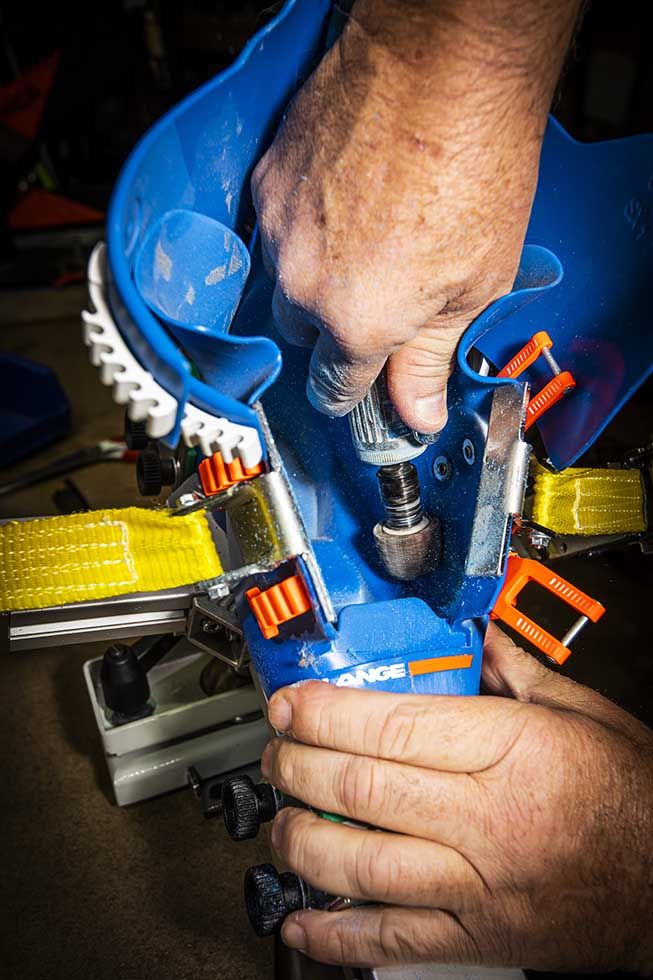
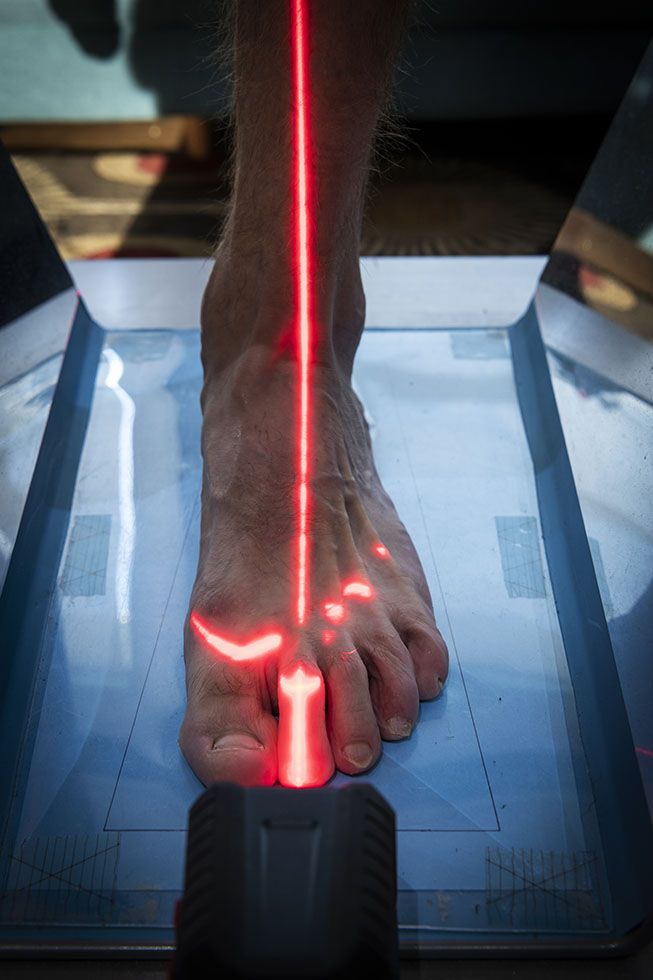
Tech That Just Might Be A Game Changer for You
Heat-Molding “The biggest advancement in boots in recent years is probably the ability to improve the fit in the store by heat-molding the liner and the shell,” says Lasseter. “This has made people’s first couple days skiing more enjoyable and increased the likelihood of coming back only for more typical adjustments like punching, grinding, stretching, etc.” While it may seem contrarian, once your boots are fitted hot air is the enemy of future comfort. Plunking your hair dryer in them or putting them on a radiator will undo all the good a fitter did by heat molding the plastic shell and custom insole. By the same rationale, boots should be stored in a cool, dry place.
Rear-Entry Boots “The technology isn’t new and it doesn’t really have any performance attributes, but we’re seeing it come back,” says Powell. “This is where the hinge mechanism is located back a bit, making it easier to step into. I think it boils down to an aging demographic. Now skiers who are aging are putting in booster straps and heaters and that means they can go skiing with their grandkids. Rear-entry is kind of like an e-Bike, it allows you to get out and do their thing.”
BOA Fit System This proprietary technology was designed to replace boot lacing systems or buckles with a thin dial connected to thin wire cabling that enables more precise tightening or loosening—and it has industry pundits watching with interest. “It is year one for BOA in the world of ski boots, but I think it’s here to stay. The selling point is that you get a more precise fit, but the challenge this year will be you’ll pay a bit of a premium for it,” says Lasseter. Baker-Brown believes that “the verdict is still out” on how effective BOA will be in improving the comfort and performance of ski boots, while Powell ruminates, “If people have a hard time getting into their boots I wish they’d put the BOA on the upper part of the shell, and left buckles on the lower.” Pelkeinen’s take: “Will it solve a problem of a well-fitted boot? Potentially, but in my humble opinion the fewer moving parts on the boot, the better.” Says Williams, “I think they could be useful in certain categories of boots. Time will tell.”
Words to Ski By
Williams: “Make sure your boots are dry prior to every use. Find a quality ski sock that you really like and buy plenty of them. If you travel, plan for your boots to feel a bit off as your feet will swell during flights and long travel days—compression socks can really help and make your first day of your vacation a great day of skiing.”
Baker-Brown: “Definitely one pair of quality, wicking, thin ski socks. And I put my ski socks on immediately before putting my ski boots on—I do not wear them to the mountain or they can get sweaty and wet on the way. Custom footbeds (highly recommend). Don’t tuck anything into the cuff of your boot (pants etc.).”
Lasseter: “A good quality sock is such a small price tag compared to the price of the boots, and putting on a fresh, dry pair of socks in the middle of the day is a really great way to stay warm as well.”
Palkeinen: “If you’re a skier purchasing boots off the shelf and perhaps only ski a few times a year, the quality of the stock liner is an absolute in terms of elements to consider.”
Powell: “You don’t want the liner to be compromised by the sock, so when I find a liner that complements my foot, I’m going to stick to a thin sock to wick moisture from my foot into the liner. The layer closest to my foot has to remain dry—you see people complicating this with heaters. If your foot sweats, the sock gest saturated, and you won’t stay dry and warm if you’re freezing and warming your feet over and over.
Verdonk: “Date your skis, marry your boots. When you find a brand or model that works, stick with it.” E
